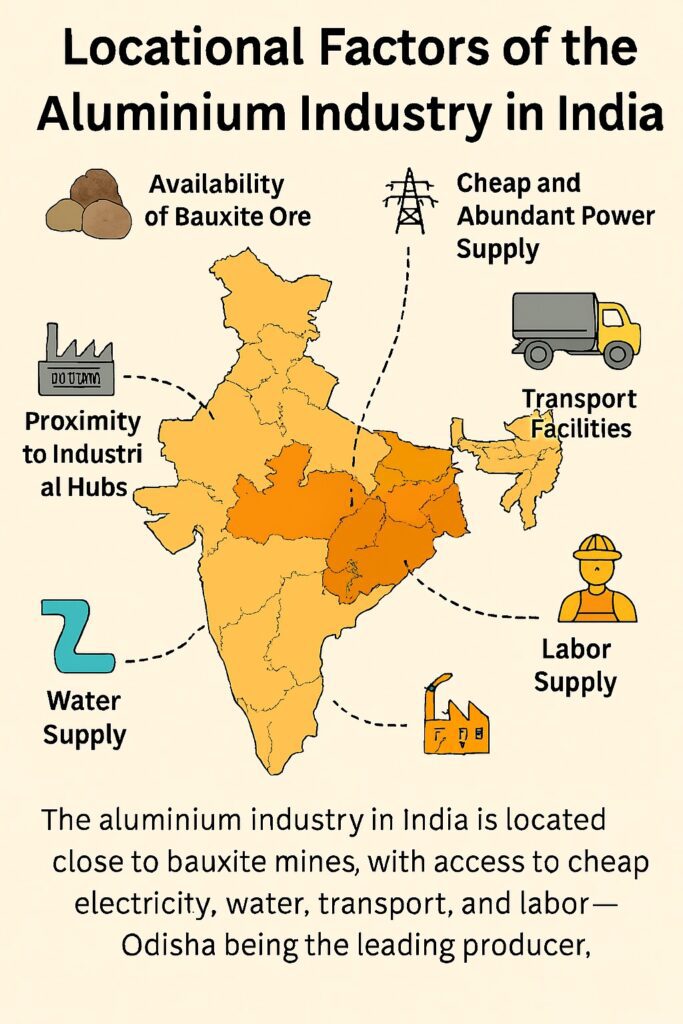The aluminium industry is a vital part of India’s industrial landscape, producing one of the most versatile and lightweight metals used in transport, packaging, construction, electrical, and aerospace sectors. India is among the top aluminium-producing countries in the world. The choice of location for aluminium plants in India is determined by the availability of raw materials, energy, infrastructure, and markets.

Table of Contents
Availability of Raw Materials
The availability of raw materials such as bauxite and coal is a crucial factor in the aluminum industry. Regions with abundant sources of raw materials are ideal for aluminum production. India is endowed with significant deposits of bauxite, the primary raw material for aluminum production, with major reserves found in the states of Odisha, Andhra Pradesh, and Gujarat. The availability of coal, a source of energy for the aluminum smelting process, is also an essential factor, with major coal reserves located in Jharkhand, Chhattisgarh, and Odisha.
Access to Energy
The aluminum industry is an energy-intensive sector, and regions with a stable and affordable source of energy are preferred for aluminum production. India has an abundant supply of coal, which is the primary source of energy for the industry, and is also looking to expand its renewable energy sector to provide sustainable energy sources for aluminum production.
Proximity to Markets
The proximity to markets is an important factor in the aluminum industry, as aluminum products are heavy and expensive to transport. Regions with easy access to markets are ideal for aluminum production, as they ensure that the products can be transported quickly and efficiently to the markets. The major aluminum producing regions of India, such as Odisha, Gujarat, and Jharkhand, are located near major cities and ports, which act as significant aluminum markets.
Transportation Infrastructure
The transportation infrastructure plays a crucial role in the aluminum industry. Regions with well-developed transportation networks, such as railways, roads, and ports, are ideal for aluminum production. The major aluminum producing regions of India have access to major transportation hubs, such as the ports of Haldia, Paradip, and Vizag, which ensure easy transport of raw materials and finished products.
Government Policies
Government policies, such as incentives and subsidies, play a key role in the growth and success of the aluminum industry. The government policies related to taxation, labor laws, and infrastructure development have a significant impact on the industry. In India, the government has taken various steps to promote the growth of the aluminum industry, such as the National Aluminum Policy, which aims to increase domestic production and exports of aluminum.
In conclusion, the aluminum industry in India is influenced by several locational factors, including the availability of raw materials, access to energy, proximity to markets, transportation infrastructure, and government policies. Understanding these factors is essential for the success and growth of aluminum production and trade in India.
Read: Geography Notes